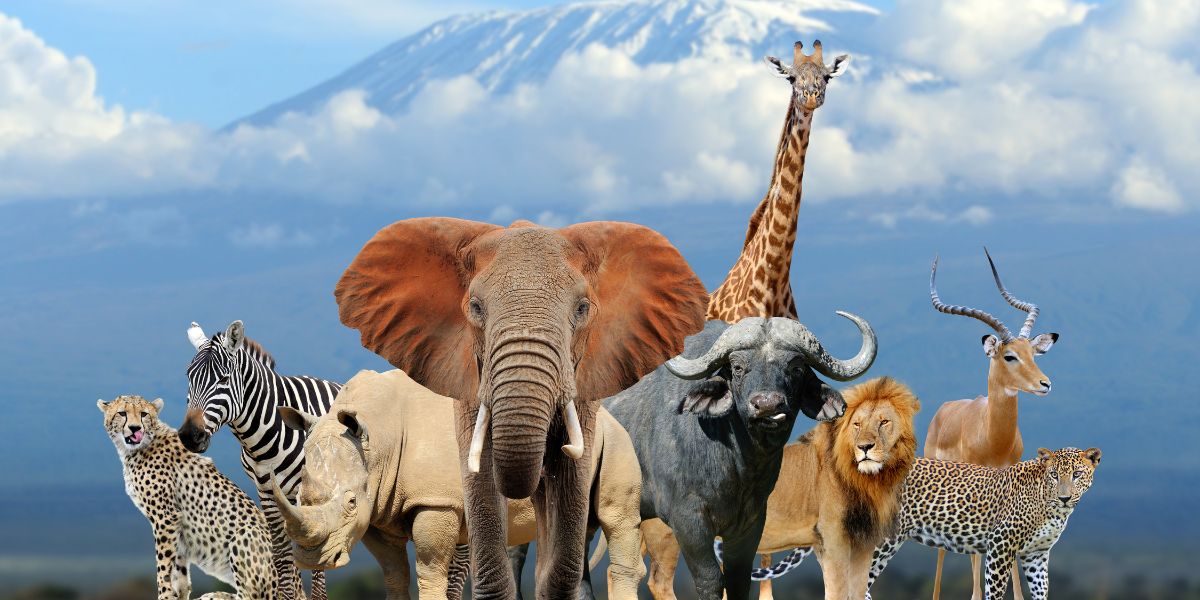Engaging young minds with the fascinating world of animals can be a delightful and educational adventure. Imagine the spark in a child’s eye as they learn to connect the word ‘elephant’ with the giant, grey, long-tusked creature, or the excitement they feel when they successfully identify a ‘butterfly’ fluttering in the garden. Teaching children the names of animals is not just about expanding their vocabulary; it’s about fostering curiosity, promoting empathy towards other creatures, and sparking an early interest in biology and the natural world.
Table of Contents
ToggleHow do you teach animals names to kids?
Psychologically, it is proved that visualizing things makes us learn better than rote learning. As well as a fun way always helps a child with studies. Moreover, a child going through the developing phase is curious. They tend to categorize everything they contact. Thus, kids are really fascinated by animals.

Start with familiar animals:
Start by introducing children to familiar animals in their immediate environment. Kids often come across animals like dogs, cats, or birds around their homes or neighborhoods. Take advantage of these everyday encounters to teach them animal names. For example, while reading a storybook or watching a cartoon that features a cat, you can point out, “This is a cat, just like the one we saw in the park.” Gradually, they will start to associate the name “cat” with the furry, meowing creature. This approach not only expands their vocabulary but also enhances their observational and associative skills.
Animal Sounds:
Kids often get attracted to the sounds of animals. You could have heard your kid say meow or woof. Hence, showing your child a picture of an animal and making them hear sound will increase their ability to remember the animal’s sound and picture. It takes a little time to play sound games with your preschoolers. Hearing is an important way of learning as well.
Card Games:
Kids memorize better if shown a picture and asked questions. Simply make your child play creative card games. For instance, match the cards or find where is the dog. These ideas can make your child memorize the name and picture of an animal. It is also a family-friendly activity that brings you closer to your little one.
Trip To Zoo:
Trips aren’t only for fun. They can be used very productively in education. You can take your family on trips on weekends. Notice how your child remembers animals’ names well. It is proved in theories that encountering things leaves a stronger impact than learning and writing them off books or even looking at videos. Thus, your child is more likely to remember how an elephant looked, and how they had ridden on a horse instead of what book pages said.

Singing Songs With Animals Name:
Sometimes you notice how a song gets stuck in your head. Maybe you heard it once but it gets fixed in your mind for time being. In the same way, making songs of animals’ names and sounds can help your child learn the names better. Since every child gets attracted to noise and music. Your child will also be attracted to listening to music. It is a small productive way that can make your child memorize the names for a long time.
Engage in Animal Paper Crafts:
A fantastic way to teach kids animal names is through Animal Paper Crafts. This activity sparks creativity and boosts learning. For example, while making a paper lion, you can have a conversation with children about lions – their characteristics, habitat, and sounds they make. As they fold, color, and assemble the paper into a lion’s shape, the image of a lion becomes deeply ingrained in their mind, and they associate the craft with the animal’s name. This enjoyable educational activity enriches their knowledge about animals, develops their motor skills, and nurtures their creativity.
Final Verdict:
Introducing children to the world of animals can have a significant impact on their overall development. By teaching them animal names, we not only expand their vocabulary but also foster curiosity, promote empathy, and spark an interest in biology and the natural world. Utilizing fun and creative methods like familiarization through everyday encounters, animal sounds, card games, trips to the zoo, singing songs, and animal paper crafts can make this learning experience enjoyable and fruitful for young minds.


